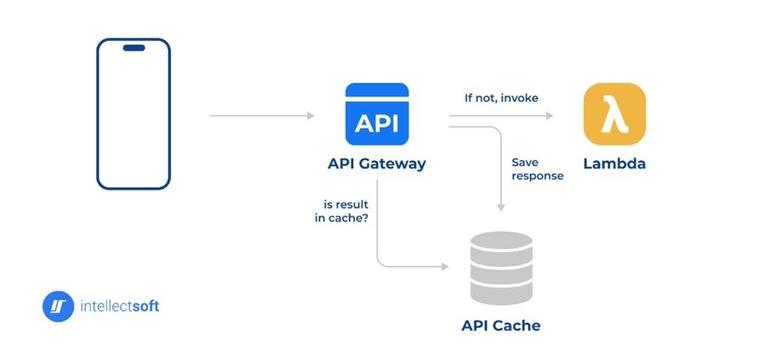Building Resilient Serverless Applications: Optimizing Performance with AWS Lambda & More (Guest blog from Intellectsoft)
Author: Yevhen Kulinichenko, Chief of Engineering (CenO) at Intellectsoft
The serverless architecture has taken the cloud world by storm. Its inherent scalability, cost-effectiveness, and ease of management make it an attractive choice for boosting productivity and contributing to economic growth. However, building robust serverless systems requires careful consideration of performance and operational efficiency. This blog post dives into leading practices for designing serverless applications using the power of AWS services. We'll explore strategies to tackle common challenges like latency and load management, ensuring your serverless applications remain performant and reliable.
Optimizing Performance for a Smooth User Experience
One of the primary goals of any web application is to deliver a fast and responsive user experience. In the context of serverless architecture, achieving this objective involves effectively managing latency and load. Here’s what you can focus on.
Caching for Speedy Responses
Caching frequently accessed responses is a powerful technique to combat latency. This significantly improves API responsiveness, especially during sudden traffic spikes, without requiring caching logic to be implemented on the application layer. API Gateway offers built-in caching functionality (although it may come for an additional cost). You can easily enable caching within the Stages section of the console. Additionally, the platform allows the configuration of cache parameters like encryption and Time-To-Live (TTL) for cached responses. Once the caching function is enabled, it is recommended to flush the entire cache or invalidate a cache at a per-key level by sending a request with a cache control header max-age set to zero. Doing that will ensure that users receive the most recent data after updates.

Throttling: Safeguarding Your Backend from Overload
Uncontrolled traffic surges can overwhelm your backend systems, leading to performance degradation and potential outages. Throttling acts as a safeguard, preventing excessive requests from reaching your backend. This is particularly crucial when your backend relies on resources that scale slower than Lambda functions, such as databases or legacy systems. API Gateway and Lambda offer throttling mechanisms. It's essential to tailor throttling rates based on the resource consumption of each endpoint. Computationally expensive operations like search functions should be throttled more aggressively to prevent cascading load on other services.
Batch Processing: Eliminating Choke Points
While SQS excels at ensuring in-order delivery for individual events, applications processing high volumes or unpredictable data bursts can benefit significantly from Amazon Kinesis. It groups events together, improving processing efficiency by reducing context switching and optimizing resource utilization. Furthermore, Kinesis’ automatic scaling ensures your processing can handle unpredictable spikes. Eventually, the cost benefits of batch processing translate to significant savings during high-volume periods.
Monitoring for Proactive Problem-Solving
Keeping a close eye on the health of your serverless application is paramount. AWS tools empower you to set up custom alerts based on specific metrics. For instance, whenever you deploy an API to production, it's recommended to establish alerts on critical metrics like latency and error counts. This allows you to be notified of any potential issues promptly, enabling swift intervention before they impact your users.
API Gateway provides valuable metrics to monitor throttling rates, helping identify potential bottlenecks. Additionally, monitoring Lambda concurrency (the number of functions executing simultaneously) ensures efficient resource utilization. Error rates are another crucial metric. Tracking the occurrence of 4xx (client-side errors) and 5xx (server-side errors) allows you to diagnose and rectify issues as soon as possible.
CloudWatch is another powerful AWS service that simplifies application monitoring. For serverless applications, CloudWatch enables the creation of insightful dashboards. These dashboards can monitor various aspects of your system, including:
- API Gateway Health: Track key metrics like throttling rates and error counts to identify potential issues with your API.
- Underlying Resources: Gain insights into the health of resources utilized by your API, such as DynamoDB tables and ElastiCache clusters.
Focusing solely on average response times can be misleading when monitoring latency. Instead, monitoring percentile metrics (e.g., 99th, 95th, and 50th percentiles) is more productive. This provides a more comprehensive understanding of latency distribution, helping you identify potential bottlenecks and areas for improvement.
Optimizing Resource Utilization and Minimizing Concurrency
While serverless architecture offers inherent scalability, striving for optimal resource utilization is essential for boosting productivity and long-term sustainability. Let’s sum up some key considerations:
- API Gateway Caching: API Gateway's built-in caching functionality can significantly reduce the number of requests reaching your Lambda functions, thereby minimizing concurrency.
- Throttling Strategies: As discussed earlier, implementing targeted throttling based on individual endpoint resource consumption helps prevent unnecessary function invocations.
- Batch Processing: Consider using Kinesis instead of SQS as a Lambda function event source. Kinesis facilitates processing events in batches, improving efficiency compared to event-driven architectures that trigger Lambda functions for each individual event.
Conclusion: Building Resilient Serverless Systems
By implementing the best practices outlined above, you can design and build robust, scalable, and performant serverless applications. To increase productivity, you should strive to build a truly elegant serverless solution that prioritizes efficient resource utilization and achieves optimal results with minimal concurrency. By adopting these strategies and closely monitoring your application's health, you can deliver a seamless and exceptional user experience at a reasonable cost.


